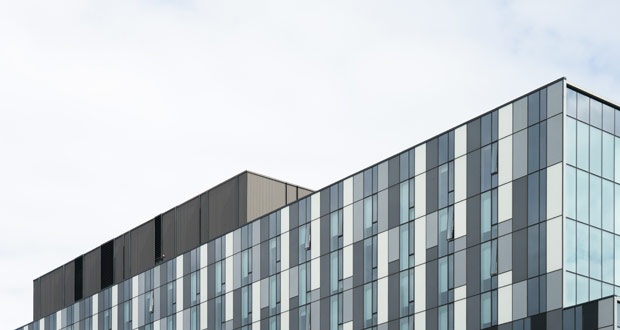
The hospitality industry has more considerations when constructing buildings than any other industry. Hotels need to cater to their guests on many different levels, from comfort to safety. In today’s world, it’s also key to do so in an environmentally friendly and sustainable way.
With recent natural disasters hitting areas of the country, many hotels are in need of retrofitting to make them more durable during a storm. While making these improvements is necessary, doing so in a sustainable fashion can be an important selling point for future guests. The following tips can help keep a property safe, weather-proof, and sustainable all at once.
Use Durable, Trustworthy Materials
When retrofitting or building a hotel, it’s important to invest in materials that are both durable and trustworthy, as well as sustainable. Materials should be designed to not only meet LEED standards, but also pass independent tests for impact, fire, and insect activity.
For example, fiber cement siding from companies like Allura makes a beautiful, durable, and sustainable outer covering for a hotel. The material is also fire and wind resistant, meets LEED standards, and comes in a wide range of styles so hoteliers can maintain both curb appeal and architectural integrity.
Control Moisture
Moisture control cannot be overlooked when weatherproofing a hotel and becomes an even bigger focus if hoteliers are looking to create a tighter building envelope to help reduce energy costs.
When moisture gets into a building’s walls, it can cause mold and mildew growth, which in turn can cause health problems for guests and employees as well as damage to the structure itself. One solution is using building wrap made by companies such as Barricade that is designed to control moisture, facilitate better drainage, and tighten the building envelope to keep energy costs down.
Create Thermal Comfort
Controlling energy costs, while ensuring that a hotel is comfortable for guests, is an important goal to reach. If erecting a new building, hoteliers should consider using insulated concrete form (ICF) blocks to create the foundation and walls.
ICF blocks create a tight building envelope with superior insulating properties. Buildings constructed from ICF blocks have lower energy bills, are more comfortable with fewer drafts and cold spots, and have better sound insulation, helping to reduce outdoor noises.
ICF is highly durable and made of long-lasting and weatherproof concrete, so hotels that use it will be better able to withstand high winds, rains, and other storms.
Install Proper Drainage
Gutter and downspout systems are integral to storm management, helping to direct water away from the roof of a building. However, most traditional gutter systems are out of step with the style of many of today’s hotels.
This does not mean that it’s alright to do without one, though. Instead, consider using a highly stylish linear slot trench drain system. Slot drainage systems are less obtrusive in appearance than standard gutters, so they won’t detract from the appearance of the property. They’re also just as functional as standard gutters and will direct the water away from the roof before it has a chance to do any damage.
Whether retrofitting an existing hotel to make it weather-proof or building from the ground up, using the right building materials and strategies can help create a sustainable, durable, and storm proof hotel that also provides guests with a comfortable experience and stylish design.
About the Author
Matt Lee from Innovative Building Materials is a green design and digital marketing expert. Innovative Building Materials is a website that covers various construction topics and design concepts with a focus on sustainable and stylish building materials.











